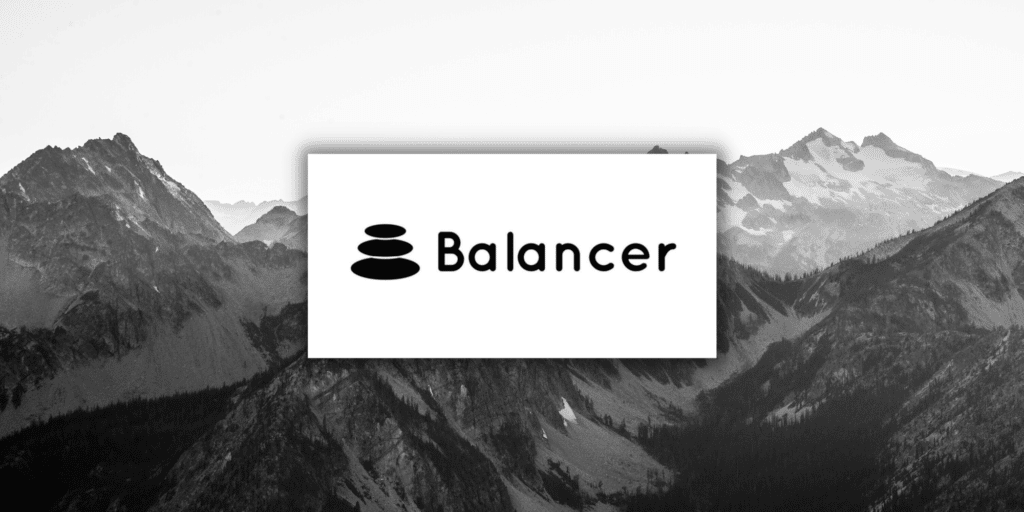- Automated Market Makers Explained
- How Does Balancer Work?
- BAL Token - Exploring Balancer's Tokenomics
- What Projects are Using Balancer?
- Final Thoughts: What Makes Balancer Unique?
Balancer is a decentralized exchange (DEX) and automated market maker (AMM) built on the Ethereum network. The protocol is governed by its community of $BAL token holders, who vote on protocol changes or submit their own proposals. In addition to Ethereum, Balancer supports two of the most popular Ethereum layer-2s: Polygon and Arbitrum.
BlockScience, a blockchain consulting firm, created Balancer in early 2020. The company held a funding round in March, selling 5 million BAL tokens and raising $3 million. The project has held a market cap as high as nearly $500 million.
This Balancer guide will thoroughly explore how the protocol works, its main features, and how it allows users to generate revenue.
But first, we need to understand what AMMs and DEXs are.
Automated Market Makers Explained
An AMM is an algorithmic protocol that uses a mathematical formula to quote prices between two assets when a user places a trade. AMMs are a liquidity solution to decentralized exchanges and highly differ from traditional order books from centralized exchanges such as Binance.
ely on market makers like in order books but on liquidity providers who deposit cryptocurrency coins and tokens into a liquidity pool to reflect a balanced price between two or more assets.
AMMs might use different mathematical formulas for liquidity pools, but the idea is to maintain the base liquidity.
For example, Uniswap, the largest DEX in the DeFi sector, popularized the constant product formula: x * y = k, where x is the value of one token and y is the value of the other token, and k is a fixed constant.
How Does Balancer Work?
Balancer is a non-custodial liquidity provider that uses a decentralized infrastructure to provide automated asset management.
Balancer has two interfaces: one is a crypto trading platform, and the other is an automated asset management that works similarly to an index fund.
Balancer’s Crypto Exchange
Balancer’s trading platform is where traders seek to buy or sell cryptocurrencies at the best prices and are charged a fee for doing so.
When a trader places an order (say, for example, ETH per BTC), Balancer looks and selects the pool with the best price for a trade, prioritizing pools with the largest price discrepancies and token distribution —one with 80% BTC and 20% ETH, instead of pools with 70% BTC, 15% ETH and 15% DAI.
Balancer Pools
To explain this better, a traditional index fund tracks the performance of certain financial market indexes made up of stocks, bonds, and others, such as the S&P 500. Index funds pool investors’ money in a passively-managed portfolio composed of different assets to expand diversification. The same concept applies to Balancer, but with an infrastructure that incentivizes participation.
Balancer offers self-balanced pools that can be composed of up to eight cryptocurrencies. For example, a Balancer pool might have an 80/20 ratio between two currencies: 80% ETH and 20% BTC. If ETH doubles, for example, the protocol automatically reduces the ETH supply to maintain the 80/20 ratio.
Balancer users can become liquidity providers by depositing crypto into a pool, but each pool has different settings and parameters.
We have three types of Balancer pools:
- Public (shared) pools have preset parameters (fees, weightings, supported assets, etc.) which cannot be changed and only allow users to inject or withdraw assets.
- Private pools have parameters that can only be modified by the owner, who’s also the only one that can add or withdraw assets or give selected individuals the right to do so.
- Developers can also create “smart pools,” a type of private pool governed by smart contracts that can automatically change their parameters or add new functions, such as creating a new index fund that tracks other portfolios. While private, they can allow users to inject liquidity under the pools’ conditions.
Unlike traditional index funds, in which users have to pay fees to cover the fund’s management and operational costs, Balancer pays a portion of crypto trading fees to liquidity providers and rewards them with a portion of BAL tokens.
To sum up, traders on Balancer are simply looking for the best prices to exchange crypto, and liquidity providers seek the best return when depositing assets into an AMM. But how does it work? Say you have 10 BTC to deposit into an 80/20 ETH-BTC pool. The process is as follows:
- Once deposited, the protocol allocates 2 BTC to the pool but needs to convert 8 BTC to its ETH value equivalent.
- Balancer looks across all available pools with ETH and BTC pairs to execute the trade.
- The 8 BTC worth of ETH is allocated to the pool.
- You receive BAL tokens representing their pool share and are redeemable for 80% ETH and 20% BTC.
- Since there’s more BTC within the pool before your deposit, the protocol decreases the price of BTC relative to ETH to maintain the 80/20 ETH-BTC ratio.
Balancer Flash Loans Asset Manager
Certain pools might have idle capital, so Balancer implemented two features: Asset Manager and flash loans.
Asset Managers are external applications that own and manage the underlying tokens of certain pools held in Balancer’s Protocol Vault and can leverage these assets using investment strategies to maximize yield. The first Asset Manager on Balancer is lending platform Aave, which came through a partnership in February 2021.
Users can also borrow uncollateralized flash loans from Balancer, which must be repaid plus interest in the same transaction that was borrowed.
BAL Token – Exploring Balancer’s Tokenomics
BAL is the governance token of the Balancer protocol, providing users with voting rights and the ability to submit governance and protocol proposals, such as modifying or improving network parameters.
The Balancer team initially allocated 100 million tokens as total supply:
- 25 million BAL vested to founders, developers, advisors, and investors.
- 5 million to support ecosystem development.
- 5 million to the Fundraising Fund.
- 65 million distributed to liquidity providers. 7.5 million BAL are distributed annually (the token distribution is proportional to the amount of liquidity provided by users, relative to the total liquidity on Balancer).
The BAL token reached an all-time high on May 4th, 2021, at $74.89, but it’s down over 90% since ATH, reaching a low of $3.66 on June 18th, as per data from Messari.
What Projects are Using Balancer?
Aave: one of the largest lending platforms that launched an 80/20 AAVE/ETH pool on Balancer, which rewards users in AAVE and BAL.
Tracer DAO: Mycelium, formerly Tracer DAO, is an open-source derivatives protocol that uses Balancer to aggregate liquidity and creates markets for leveraged tokens.
Element Finance (ElementFi): a protocol that offers fixed rates for yield farming. It uses Balancer pools to minimize slippage and impermanent loss.
Sense Finance: a fixed-income protocol built on Ethereum. It offers yield farming for derivatives without the risk of insolvency or liquidation. It works with Sense Space, an AMM built on Balancer to facilitate asset trading.
Final Thoughts: What Makes Balancer Unique?
Balancer combines asset management with decentralized architecture to offer thousands of self-balanced pools that pay out a portion of trading fees to users.
Being a permissionless platform, anybody can trade cryptocurrencies, create strategies to maximize returns on liquidity pools, or create their own public, private or hybrid pools on Balancer, all in a peer-to-peer and cost-effective fashion.
Never Miss Another Opportunity! Get hand selected news & info from our Crypto Experts so you can make educated, informed decisions that directly affect your crypto profits. Subscribe to CoinCentral free newsletter now.










